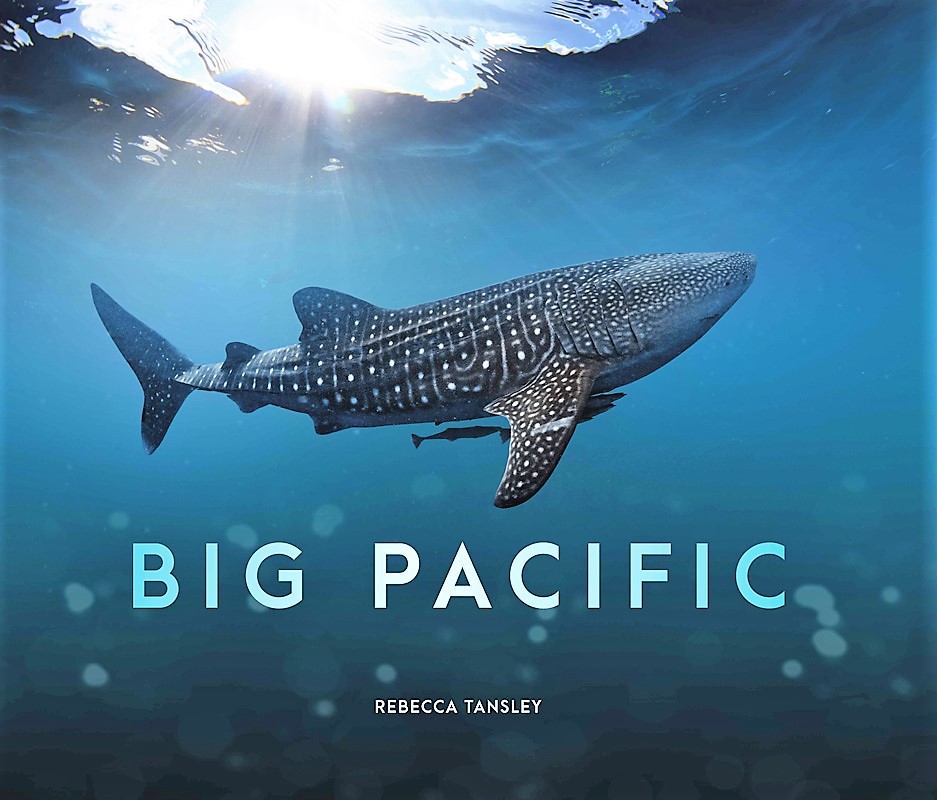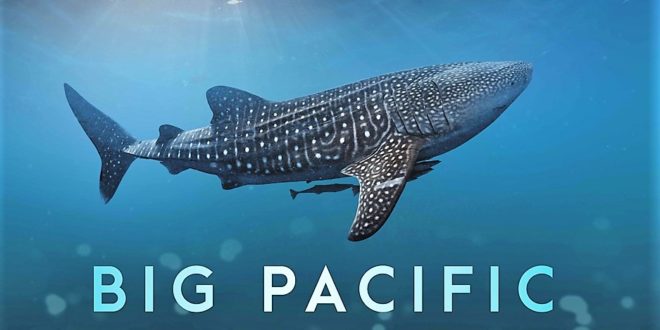We are a Pacific nation and the Pacific Ocean surrounds us. We swim in it, fish in it, fly over it and cruise through it. We worry about rising sea levels caused by global warming and how our plastic waste is killing off huge numbers of turtles and sea birds.
But most of us know very little about the myriads of other creatures whose habitat it is, especially those which live far below its surface. The Pacific Ocean is one of the last frontiers for human discovery. Now with modern marine technology its secrets are gradually being revealed.
On an epic two year journey an intrepid film crew travelled to parts of it which few have seen before and filmed many amazing species and natural phenomena. Their mission: to create a 5 part natural history TV series called The Big Pacific, a collaboration between the NZ Natural History Channel and PBS.
Around New Zealand’s coast they filmed tuatara, potbellied seahorses, yellow eyed penguins, great white sharks, shortfin mako sharks, and yellow eyed penguins They also travelled further afield to countries including the Philippines, Japan and the Galapagos Islands)

It was at times a risky adventure. On tiny Shedao Island the film crew had to be accommodated in a snake- proof concrete bunker for their safety as it teems with a unique species, the Shedao island pit viper. Just one bite from this highly poisonous predator would have necessitated an emergency medical evacuation
After decades of experience of diving with sharks, the Director of Photography Mike Bhana had developed a deep understanding of their behaviour so felt confident to observe and film Shortfin mako sharks off the north eastern coast of New Zealand without using a cage, and armed with just a PVC rod or shark shield for protection. He cautions us not to follow his example- they are incredibly dangerous and the risks are just too great!
In Big Pacific, a book to accompany the series, Rebecca Tansley has used many of the film crew’s amazing images. The chapters correspond with each of the TV episodes and cover the Passionate, Mysterious, Violent and Voracious aspects of the Pacific Ocean.
In the Passionate Pacific she describes the ritualised courting dance of the charming pot-bellied seahorse which lives in New Zealand’s temperate waters. It lasts up to 20 minutes.
“To start, the male brightens his distended stomach pouch to a bright yellow hue and inflates it and deflates it repeatedly. He then approaches his intended, head tucked down and tiny fins fluttering.”
In the Voracious Pacific it surprised me to discover that the Blue Whale, one of the world’s largest animals (up to 30 metres in length, weighs up to 200 tons and with a heart the size of a small car) is fuelled largely by a diet of tiny shrimp-like creatures called krill.
In the Mysterious Pacific the mystery of why hundreds of thousands of Olive ridley turtles manage to arrive (some from thousands of miles away) almost simultaneously on a beach in Puerto Rico remains unsolved. Each digs in the sand with their rear flippers, lays around a hundred eggs, covers them over then returns to the sea.
Typhoons and hurricanes form over tropical seas. And Pacific Islands are formed through tussles between tectonic plates as they jostle against each other in the Violent Pacific. Humpback whales engage in aggressive courtship battles and it is the hunting ground for fearsome predators like the bobbit worm (which is related to our earthworm) but is an astonishing 30 metres long.
Humans too have caused mayhem. It has been the scene of fierce naval battles and secret submarine missions. But this violence pales into insignificance when compared to the massive pollution mankind is causing today.
A photograph of a beach littered with plastic debris writes Tansley is ‘a sobering indication of the inestimable volume of plastic now awash in the Pacific. No-one knows definitively how large these concentrations are – but the cost of plastic pollution on marine animals such as seabirds and whales, often found with stomachs full of plastic, is well documented.’
Not so many years ago if we spotted some-one picking up bits of plastic on our daily dog walk along the beach we thought they were rather eccentric. But more aware now of how fatal plastic can be to sea life we’ve joined in. It’s just a very small thing anyone can do!
Reading Big Pacific, and looking at the wonderful photographs has made me more aware of the huge diversity of creatures who make the Pacific Ocean their home and of the need for us to protect them.
Title: The Big Pacific. Author: Rebecca Tansley. Publisher: Bateman. RRP $59.99
Reviews by Lyn Potter
Parent and grandparent, Avid traveller, writer & passionate home cook









Join the Discussion
Type out your comment here:
You must be logged in to post a comment.